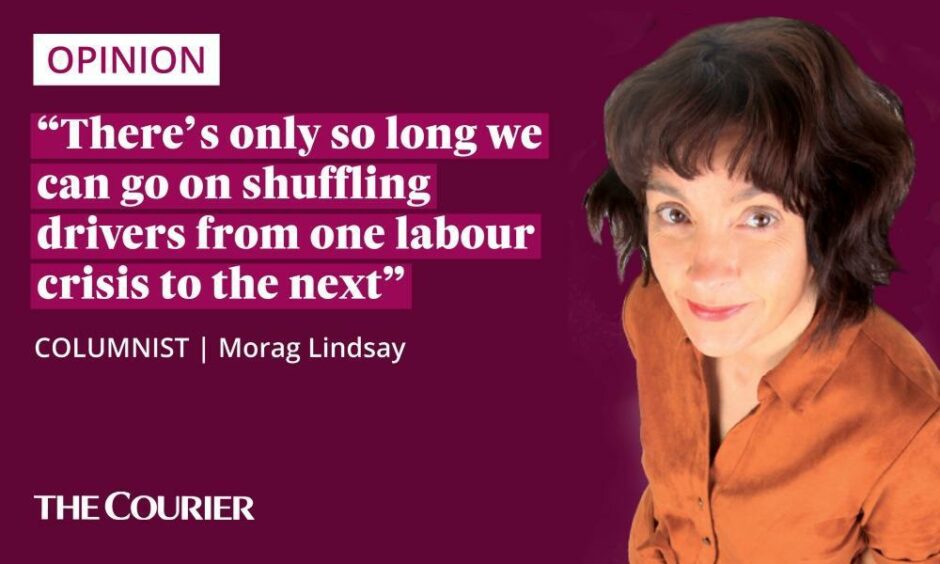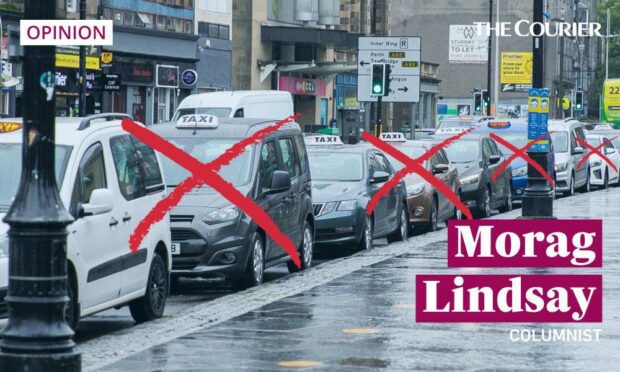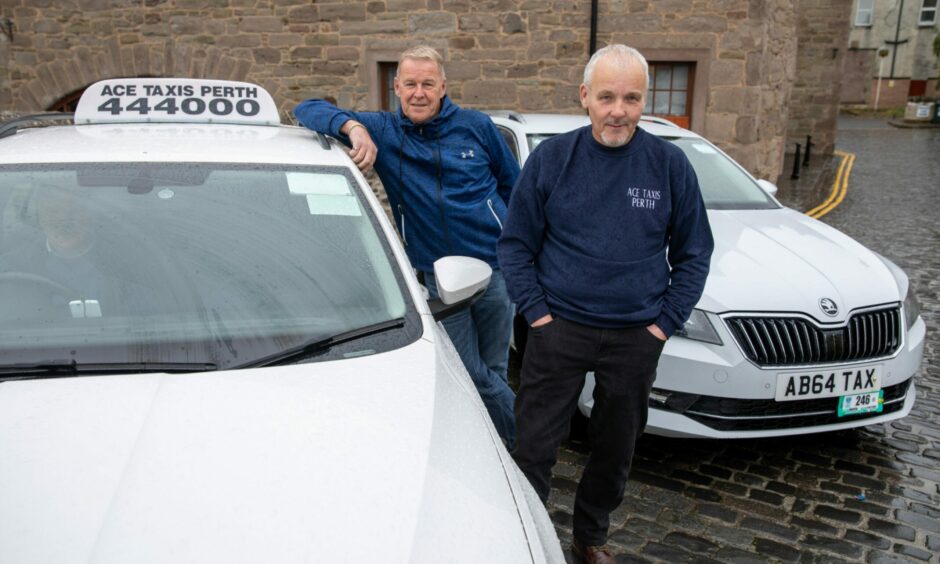Who’d be a taxi driver?
Not me.
Antisocial hours and antisocial passengers. Drunks, vomit and spilled takeaways. Fights, fare-dodgers, mean tippers and feigning enthusiasm when it’s the 20th time you’ve heard “busy tonight?” from the back seat.
I don’t imagine they’re seeing humanity at its best a lot of the time.
They’ve certainly seen me at my worst.
So is anyone surprised to learn it’s the latest line of work caught in one of those pesky perfect storms we keep hearing about?

Firms across Tayside and Fife have been telling us they’re at crisis point.
It seems taxi drivers went off and found other jobs when we all stopped going out during lockdown.
Lots of them realised the grass was greener elsewhere. Less vomit. More respect. They’re not coming back. Funny that.
And what with Brexit and all that, there’s not a queue of candidates lining up to take their place.
Perth-based Ace Taxis has cars sitting idle and phones ringing off the hook.
A&B Taxis has lost at least 20 members of staff and organised a day of back-to-back interviews, only for no one to turn up.
Fifers are waiting hours for a taxi.
One wheelchair user says she’s been told there’s no one available to drive accessible cars, meaning she has to rope in friends to help her on and off buses – or stay at home.
And it’s not just a little local difficulty either.
Labour shortages are widespread
Aberdeen Taxis told the BBC it had 1,200 taxis pre-pandemic. It has 550 now.
One Glasgow firm said it had lost a third of its staff.
A former taxi driver told the Beeb he’d taken up lorry driving because the hours and conditions were better.
Which might be good news for the struggling haulage industry and our prospects for getting petrol to the pumps and turkeys onto supermarket shelves in time for Christmas.
But there’s only so long we can go on shuffling drivers from one labour crisis to the next.
🚖 Taxi driver shortage sparks safety concerns among Scottish women forced to walk home from a night out.
🚗 @glasgow_taxis lost a third of drivers during pandemic.
🚙 @Aberdeen_taxis down to 550 cabs compared to 1000 before COVID.
Here’s tonight’s @BBCScotlandNews report… pic.twitter.com/EsjQQq04D6
— Connor Gillies (@ConnorGillies) October 6, 2021
The UK Government’s solution to the truckers shortage hasn’t been a rip roaring success so far.
So it’s hard to see where all the extra taxi drivers are going to come from – or how we’re going to fast track them through the training and licensing requirements.
Taxi driver shortage is a safety issue
Those hoops they make taxi drivers jump through are there for a reason.
They’re there to protect the safety of passengers.
And it’s safety that makes this labour shortage so concerning.
“She was walking home” is the slogan we’ll all remember from this year.
It’s on placards and hashtags and in the back of all of our minds in the wake of Sarah Everard’s murder.
It’s why women are campaigning for the night tube to be reinstated in London, where Sarah was abducted by her killer Wayne Couzens.
And it’s why no one wants anyone to be walking home anywhere when it’s cold and it’s dark and they’re alone and they’re vulnerable.
Monsters are mythical but violence against women and girls is very real.
A tirade from me in @thecourieruk on why bystanders either need to change their ways or share in the guilt of perpetrators #shewaswalkinghome https://t.co/EYcfMcSsIv
— Kezia Dugdale (@kezdugdale) October 6, 2021
That goes for men too.
For all our fears as women it’s men who are more likely to get a battering if they’re out on the streets when the pubs are emptying.
And if there aren’t enough taxis, that’s exactly what’s going to happen.
So a taxi driver shortage might not seem like something we need to worry about in our sober moments.
But like so many of those things we once took for granted, it turns out we miss them when they’re gone.
Who pays for high wage economy?
On the face of it, the “high wage” economy that Boris Johnson outlined at the Conservative Party conference this week, is something we should welcome.
If the pandemic showed us anything it’s that the workers we rely on most – the carers, the shop workers, the taxi drivers – are often the ones we’ve valued least.
The answer to our mounting labour crises isn’t bringing in immigrants to do these jobs for less money, he says.
It’s time for business to raise the pay and improve the conditions for workers here.
Transforming Britain into a high-wage economy by taking us through a phase of fuel shortages and supply chain disruptions is such a bold, brilliant strategy from the Tories I’m amazed they never mentioned it until about two weeks ago.
— Jonathan Coe (@jonathancoe) October 5, 2021
It’s a brilliant idea. On paper.
A decent wage for an honest day’s work. Who’s going to argue with that?
But like lots of Boris’s bright ideas it’s probably going to come down to other people to figure out the details and pick up the tab.
There’s no quick governmental fix coming for the taxi driver crisis.
Petrol queues make for embarrassing front page pictures. Overstuffed taxi ranks? Not so much.
So we’re in for longer waits and fares are probably going to increase, along with all the other price rises up ahead.
Until then the best we can do is look out for one another.
Stay safe, be patient, be nice and tip your driver. You might need them to look out for you when you can’t look after yourself.

